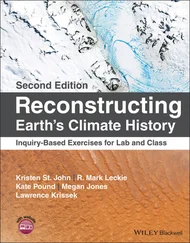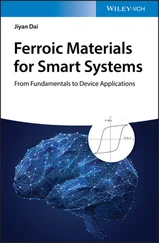John O'Brien - Earth Materials
Здесь есть возможность читать онлайн «John O'Brien - Earth Materials» — ознакомительный отрывок электронной книги совершенно бесплатно, а после прочтения отрывка купить полную версию. В некоторых случаях можно слушать аудио, скачать через торрент в формате fb2 и присутствует краткое содержание. Жанр: unrecognised, на английском языке. Описание произведения, (предисловие) а так же отзывы посетителей доступны на портале библиотеки ЛибКат.
- Название:Earth Materials
- Автор:
- Жанр:
- Год:неизвестен
- ISBN:нет данных
- Рейтинг книги:5 / 5. Голосов: 1
-
Избранное:Добавить в избранное
- Отзывы:
-
Ваша оценка:
- 100
- 1
- 2
- 3
- 4
- 5
Earth Materials: краткое содержание, описание и аннотация
Предлагаем к чтению аннотацию, описание, краткое содержание или предисловие (зависит от того, что написал сам автор книги «Earth Materials»). Если вы не нашли необходимую информацию о книге — напишите в комментариях, мы постараемся отыскать её.
Earth Materials,
Earth Materials,
Earth Materials — читать онлайн ознакомительный отрывок
Ниже представлен текст книги, разбитый по страницам. Система сохранения места последней прочитанной страницы, позволяет с удобством читать онлайн бесплатно книгу «Earth Materials», без необходимости каждый раз заново искать на чём Вы остановились. Поставьте закладку, и сможете в любой момент перейти на страницу, на которой закончили чтение.
Интервал:
Закладка:
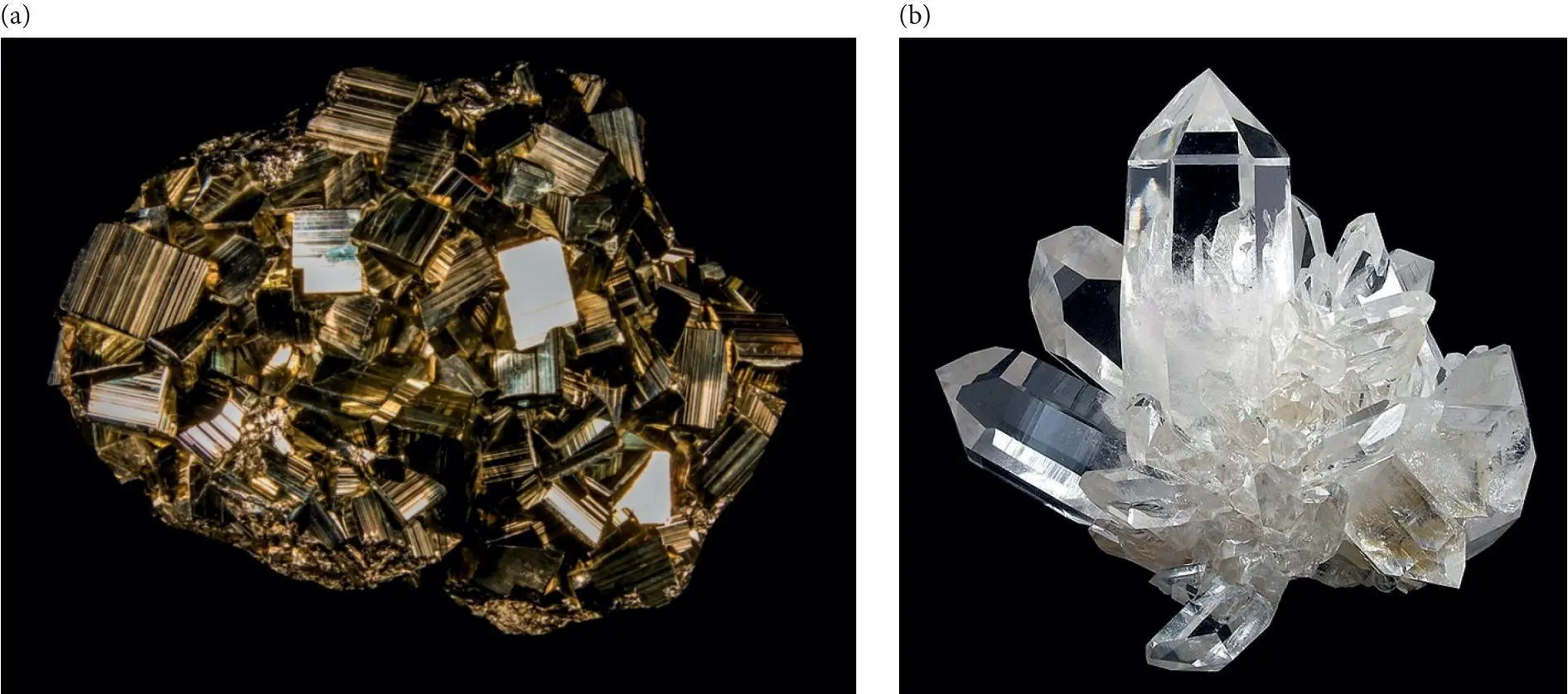
Figure 4.1 Representative mineral crystals: representative mineral crystals: (a) pyrite.
Source : Courtesy of Doug Moore.
(b) quartz.
Source : Robert Lavinsky. iRocks.com—CCBYSA 3.0, https://commons.wikimedia.org/wiki/File:Quartz‐153455.jpg;last accessed 09/24/2020.
Mineralogists have developed language to describe the symmetry of crystals and the crystal faces that enclose them. Familiarizing students with the concepts and terminology of crystal symmetry and crystal faces is one of the primary goals of this chapter. A second goal of this chapter is to build connections between crystal chemistry ( Chapters 2and 3) and crystallography. This involves an explanation of the relationships between chemical composition, coordination polyhedra and the crystal structures, crystal faces, and crystal forms that develop as crystals grow.
Motifs and nodes
When minerals begin to form, atoms or ions bond together, so that partial or complete coordination polyhedra develop ( Chapter 2). Because the ions on the corners and edges of coordination polyhedra have unsatisfied electrostatic charges, they tend to bond to additional ions available in the environment as the mineral grows. Eventually, a small cluster of coordination polyhedra is formed that contains all the coordination polyhedra characteristic of the mineral and its chemical composition. In any mineral, we can recognize a small cluster of coordination polyhedra that contains the mineral's fundamental composition and unit of pattern or motif. As the mineral continues to grow, additional clusters of the same pattern of coordination polyhedra are added to form a mineral crystal with a three‐dimensional geometric pattern – a long‐range, three‐dimensional crystal structure. Clusters of coordination polyhedra are added, often one atom or ion at a time, as (1) the crystal nucleates, (2) it becomes a microscopic crystal, and, if growth continues, (3) it becomes a macroscopic crystal. Growth continues in this manner until the environmental conditions that promote growth change and growth ceases.
Long‐range, geometric arrangements of atoms and/or ions in crystals are produced when a fundamental array of atoms, a unit of pattern or motif, is repeated in three dimensions to produce the crystal structure. A motifis the smallest unit of pattern that, when repeated by a set of symmetry operations, will generate the long‐range pattern characteristic of the crystal. In minerals, the motif is composed of one or more coordination polyhedra. In wallpaper, it is a basic set of design elements that are repeated to produce a two‐dimensional pattern, whereas in a brick wall the fundamental motif is that of a single brick that is repeated in space to form the three‐dimensional structure. The repetition of these fundamental units of pattern by a set of rules called symmetry operationscan produce a two‐ or three‐dimensional pattern with long‐range order. When several different motifs could be repeated by a similar set of symmetry operations, we may wish to emphasize the general rules by which different motifs may be repeated to produce a particular type of long‐range order. In such cases, it is useful to represent motifs by using a point. A point used to represent any motif is called a node. The pattern or array of atoms about every node must be the same throughout the pattern the nodes represent.
4.2 SYMMETRY OPERATIONS
4.2.1 Simple symmetry operations
Symmetry operations may be simple or compound. Simple symmetry operationsproduce repetition of a unit of pattern or motif using a single type of operation. Compound symmetry operationsinvolve motif repetition using a combination of two symmetry operations. Simple symmetry operations, discussed in this section, include (1) translation, by specific distances in specified directions, (2) rotation, about a specified set of axes, (3) reflection, across a mirror plane, and (4) inversion, through a point called a center. These operations are discussed below and provide useful insights into the geometry of crystal structures and the three‐dimensional properties of such crystals.
Translation
The symmetry operation called translationinvolves the periodic repetition of nodes or motifs by systematic linear translation. Two‐dimensional translation of basic design elements generates a row of similar elements ( Figure 4.2a). The translation is defined by the unit translation vector (t), a specific length, and direction of systematic displacement by which the pattern is repeated. Motifs other than triangles, any motif, could be translated by the same unit translation vector to produce a one‐dimensional pattern. In minerals, the motifs are clusters of atoms or coordination polyhedra that are repeated by translation.
Two‐dimensional translationsare defined by two unit translation vectors( t a and t b or t 1 and t 2, respectively). The translation in one direction is represented by the length and direction of t aor t 1. Translation in the second direction is represented by the length and direction of t bor t 2. The pattern generated depends on the length of the two unit translation vectors and the angles between their directions. The result of any two‐dimensional translation is a plane latticeor plane mesh. A plane lattice is a two‐dimensional array of motifs or nodes in which every node has an environment similar to every other node in the array ( Figure 4.2a, b).
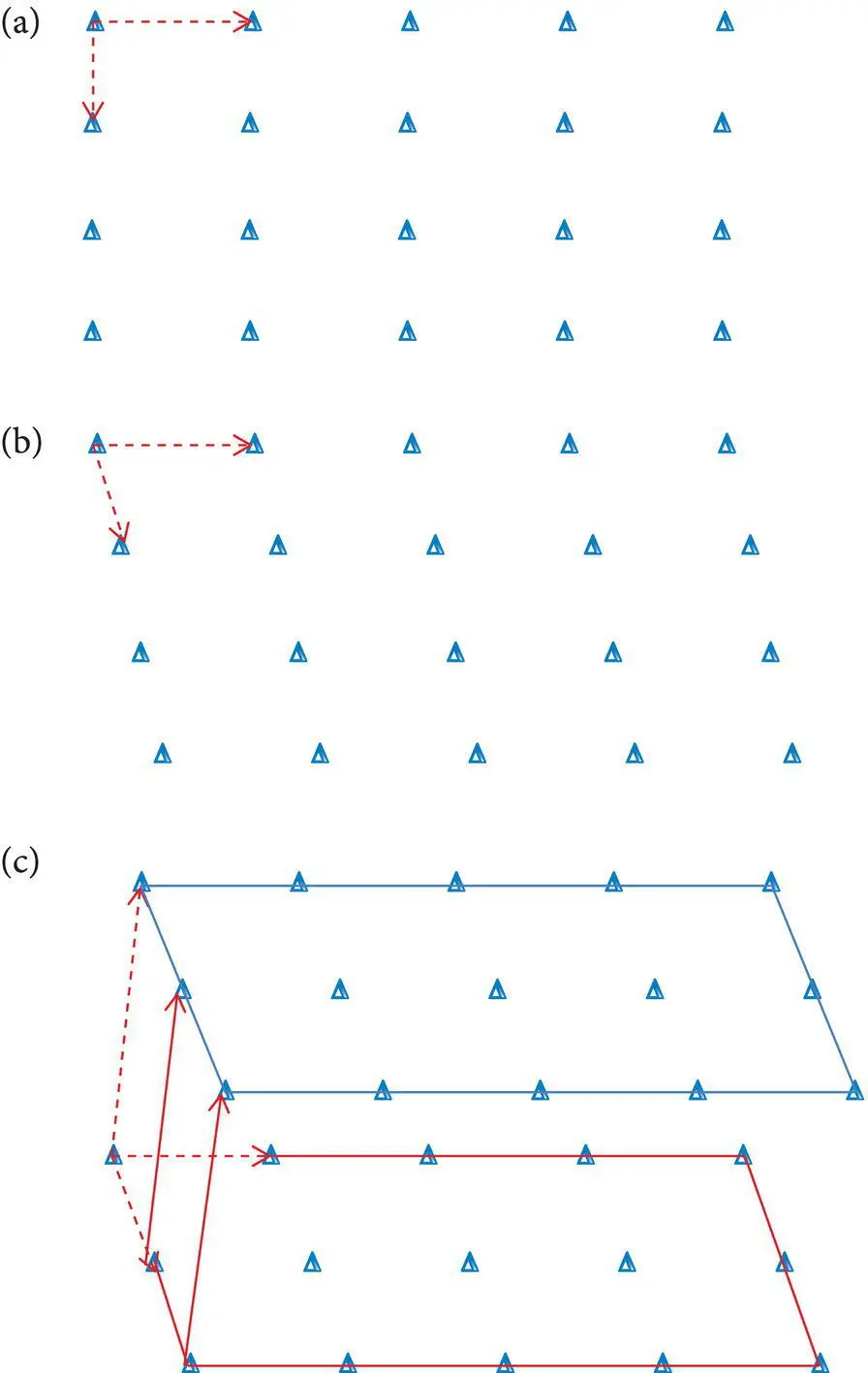
Figure 4.2 (a) Two‐dimensional translation at right angles (t 1and t 2) to generate a two‐dimensional mesh of motifs or nodes. (b) Two‐dimensional translation (t 1and t 2) not at right angles to generate a two‐dimensional mesh or lattice. (c) Three‐dimensional translation (t 1, t 2, and t 3) to generate a three‐dimensional space lattice.
Three‐dimensional translationsare defined by three unit translation vectors ( t a , t b , and t cor t 1 , t 2 , and t 3, respectively). The translation in one direction is represented by the length and direction of t aor t 1, the translation in the second direction is represented by t bor t 2and the translation in the third direction is represented by t cor t 3. The result of any three‐dimensional translation is a space lattice. A space lattice is a three‐dimensional array of motifs or nodes in which every node has an environment similar to every other node in the array. Since crystalline substances such as minerals have long‐range, three‐dimensional order and since they may be thought of as motifs repeated in three dimensions, the resulting array of motifs is a crystal lattice. Figure 4.2c illustrates a space lattice produced by a three‐dimensional translation of nodes or motifs.
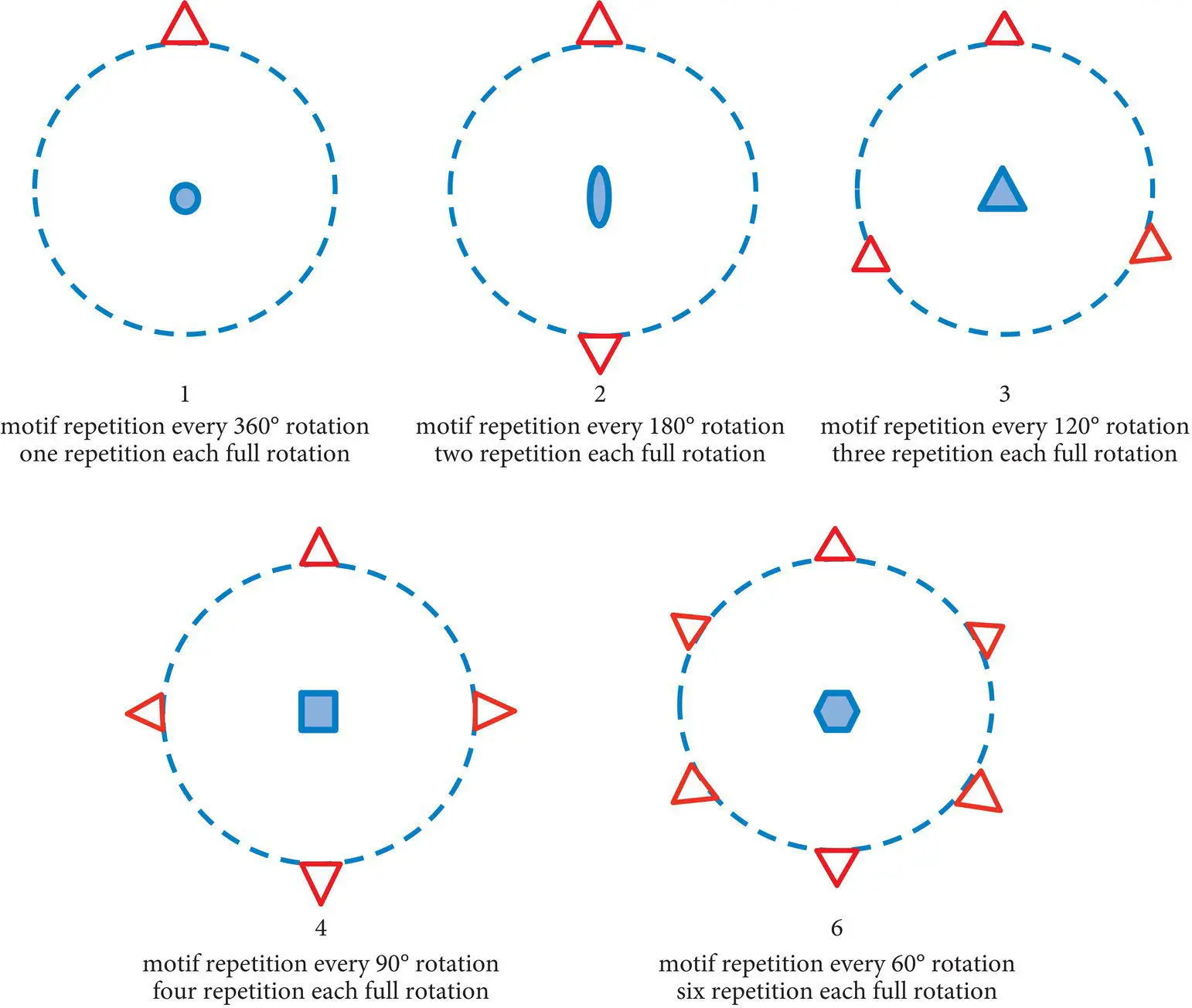
Figure 4.3 Five major types of rotational symmetry operations, viewed looking down rotational axes marked by blue symbols in the center of each circle: dot marks axis of onefold rotation (1), oval marks axis of twofold rotation (2), triangle marks axis of threefold rotation (3), square marks axis of fourfold rotation (4), and hexagon marks axis of sixfold rotation (6).
Читать дальшеИнтервал:
Закладка:
Похожие книги на «Earth Materials»
Представляем Вашему вниманию похожие книги на «Earth Materials» списком для выбора. Мы отобрали схожую по названию и смыслу литературу в надежде предоставить читателям больше вариантов отыскать новые, интересные, ещё непрочитанные произведения.
Обсуждение, отзывы о книге «Earth Materials» и просто собственные мнения читателей. Оставьте ваши комментарии, напишите, что Вы думаете о произведении, его смысле или главных героях. Укажите что конкретно понравилось, а что нет, и почему Вы так считаете.











